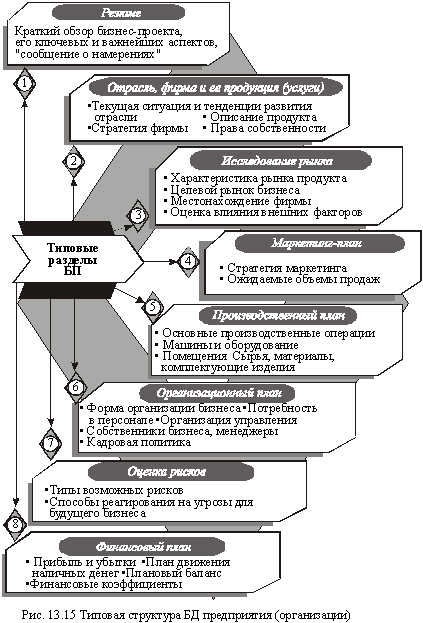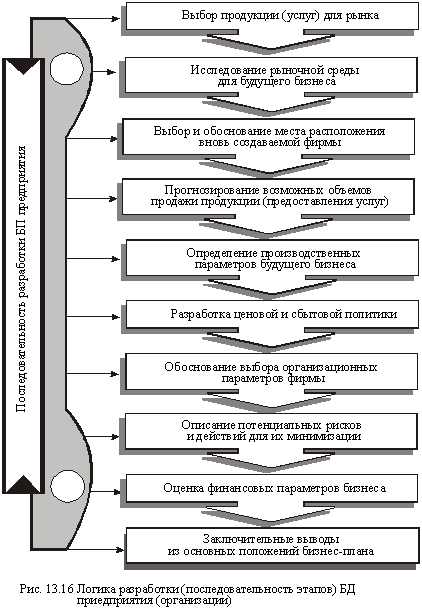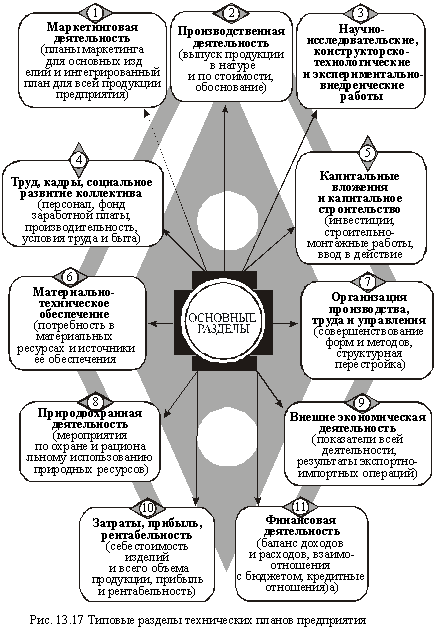home
 Economy Economy
 Economy of the enterprise - Pokropivny SF Economy of the enterprise - Pokropivny SF
|
Economy of the enterprise - Pokropivny SF
13.5. Tactical and operational planning
Features and content of tactical plans
The formulation of medium- and short-term plans refers to the tactical planning of the activities of any enterprise. Tactical planning for certain characteristics is significantly different from the development and practical implementation of the strategy. There are three aspects to this difference.
- The first is temporary: strategic planning is associated with decisions whose consequences will be manifested over a long period; The tactical plans are concretized and supplemented by strategic ones.
- The second - on the coverage of spheres of influence: strategic planning has a broader and deeper impact on all aspects of the enterprise, and tactical planning is largely narrowly focused.
- The third is essential: if the strategic plans outline the mission and objectives of the enterprise's activities subordinated to this mission, and also fundamentally important common means of achieving such, then the tactical must clearly identify the whole set of concrete practical measures necessary to achieve the intended goals.


Consequently, there is always a certain relativity, the conventionality of the distribution of the time horizons of planning (and, accordingly, strategic documents of strategic importance and tactical support) in the form of long-, medium- and short-term plans. But the long practice of planning work determined a period of one year as the most acceptable for the development of tactical short-term plans. Medium-term plans are developed for a period of several years to specify and detail the tasks of long-term strategic planning. It can be argued that the medium-term plan is a quantitatively determined enterprise strategy for all (or the most important) sub-strategies.
Medium- and short-term plans are interrelated; They are compiled according to a single methodology and have approximately the same structure (list of sections), shown in Fig. 13.17.
The content characteristic of tactical plans also provides for the allocation of indicators (planned tasks), for certain indicators of the assessment of the degree of their implementation and the activities of the enterprise as a whole.
The economic content of the indicators are divided into natural and value . Natural indicators are needed for material expression and substantiation of the plan: the number of manufactured products, the necessary materials, equipment, etc. Value indicators are used to characterize the total volume of production, the rate of its development, the size of costs, revenues, etc. Between the natural and value indicators There is a close relationship and dependence. The cost indicators are calculated on the basis of natural, but at the same time, operating with the generalized cost of costs and results, stimulate the rational use of resources, the increase in production efficiency.
For economic purposes, the indicators are divided into quantitative and qualitative . The first characterizes the absolute volumes of production and consumed resources: the volume of output, materials, production assets, the number of employees, and so on. The latter show the efficiency of the use of production resources and the entire production process: labor productivity, material consumption of products, return on assets, production costs, and so on.

Absolute and relative indicators are also distinguished. The first characterize this or that phenomenon absolutely, without comparison with other indicators. Relative indicators allow this comparison. For example, the number of employees as an absolute indicator gives information on the level of use of the factor of living labor, but if this indicator is correlated with the volume of production or compare production with the number of workers, we will have a relative index of the labor intensity of the units of production or the productivity of one worker.
Operational Planning System
Operational planning is, on the one hand, the final link in the enterprise planning system, and on the other hand it is a means of ensuring the current management of production.
In the process of operational management, the company's plans for its subdivisions - a separate production, workshops, production sites, brigades, even to workplaces - for small intervals of time (month, decade, work week, day, shift) are detailedly linked. At the same time, the development of plans is organically combined with the solution of the issues of organization of their implementation and in-line regulation of production.
Operational planning combines two directions. The first direction, within which operational plans and production and output schedules are developed, is called calendar planning.
The second direction includes the work necessary for continuous operational accounting, control and regulation of the implementation of operational plans and the course of production. This direction has received the name of dispatching.
In the process of operational planning the following main tasks are being solved:
- Ensuring the implementation of the plan for production activities (the release of planned products in the planned time frame) with the rhythmic work of all divisions of the enterprise;
- Establishment of an optimum operating mode of the enterprise, which will promote the most effective and full use of equipment and labor;
- The maximum reduction in the duration of the production cycle of work in progress.
Operational planning is carried out on a company-wide scale as a shop floor (inter-shop), and for individual workshops - in the amount of sites and workplaces (in-shop).
Inter-shop operational planning is aimed at providing coordinated activities and necessary production proportions between the plant's workshops in accordance with the sequence of technological processes (harvesting, processing, assembly) and taking into account the guild functions - basic, auxiliary, serving, and collateral. But the main task of inter-shop operational planning should be the coordination of the nomenclature of blanks, details, knots and terms of their advancement between shops (manufactures).
In-house operational planning includes the development of production schedules and monitoring of their implementation, distribution of work on sites, bringing to workplaces, operational regulation of production processes.
In the practice of management three basic systems of operational planning are distinguished: sub-branch, complete and orderly. Their brief characteristic with the allocation of subsystems is presented in Table. 13.3.
Table 13.3
The main possible operational planning systems in the enterprise
Scheduling system |
Planning unit |
Variety (subsystem) |
Justified scope of application |
|
Part of a specific name |
|
Mass and large-scale production |
|
Combined for a specific feature set of parts (nodal kit, machine kit) |
|
Serial and large-scale production (in some cases, mass) |
|
Separately received and issued order |
Selectable order size |
Single small-scale production (in some cases, it is serial) |
The choice of the system of operational and production planning depends on the type of production, composition and characteristics of the product, etc. Preference is given to the system that allows the most efficient solution of operational planning tasks.
Separate subsystems have certain fundamental features of such stability, the storage subsystem is useful provided that a large number of standard (unified) units and parts for the manufacture of finished products are used. The system of planning for the norms of technological reserves is conditioned by the objective necessity of observing the estimated level of such reserves for each shop. The complete-nodal subsystem is characteristic for the production of complex products with a long production cycle, and the machine-system subsystem can be used in the production of simple products with a small number of parts. A feature of the subsystem of operational demonstration planning is the coverage of the entire process of order fulfillment: from the preparation of production to the release of the finished product.
Development and implementation of the operational plan is carried out by the dispatching service (production and dispatch department) of the enterprise. It is entrusted with the tasks: to ensure the implementation of production schedules in all divisions; Control the rhythmic and sufficient load of all workplaces; Prevent downtime or timely identify them and quickly eliminate them; Use technological and other insurance stocks in the event of production disruptions.
Questions for self-study in depth
- Basic principles and methods of state regulation of economic development of Ukraine.
- Indicative macroeconomic planning in the management system.
- Budget planning of economic and social development of the country.
- The credit system, its functions and influence on the development of the national economy of the country.
- Principles of construction and ways to improve the tax system of the state.
- Methodology and technology of enterprise activity planning in market conditions of management.
- The system of planning the activity of the enterprise in a timely manner of managing.
- Characteristics, features and interrelation of planning methods in the enterprise.
- Objective necessity and problems of strategic planning at enterprises of various forms of ownership.
- Interrelation and interaction of strategic and tactical planning in the enterprise.
- Contents, indicators and procedure for the development of medium- and short-term plans of the enterprise.
- The system of calendar-operational planning of the enterprise's activity and the problems of improving these systems.


Comments
When commenting on, remember that the content and tone of your message can hurt the feelings of real people, show respect and tolerance to your interlocutors even if you do not share their opinion, your behavior in the conditions of freedom of expression and anonymity provided by the Internet, changes Not only virtual, but also the real world. All comments are hidden from the index, spam is controlled.